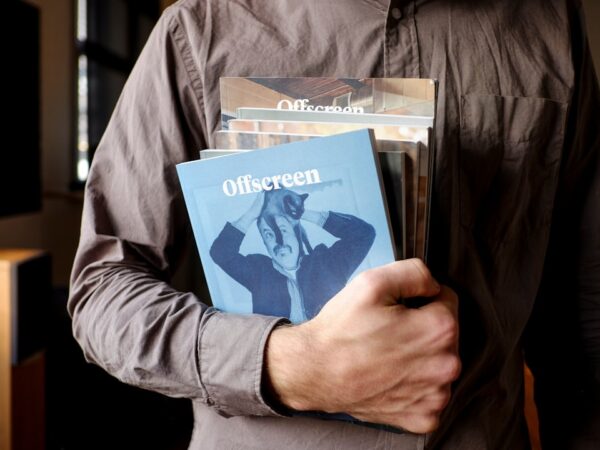
From Page to Screen: Books into Films
Book-to-film adaptations have become increasingly popular in recent years, with audiences flocking to theaters to see their favorite stories come to life on the big screen. From classic novels to modern bestsellers, there is something magical about seeing a beloved book transformed into a visual experience. However, the process of adapting a book for film is not without its challenges. It requires a delicate balance of staying true to the source material while making necessary changes for the film medium. In order to fully appreciate and understand these adaptations, it is important to delve into the art of adaptation and explore the various aspects that contribute to their success or failure.
Key Takeaways
- Adapting books into films is a complex process that requires balancing artistic license with staying true to the source material.
- Bringing beloved characters to life on the big screen can be challenging, as filmmakers must meet fan expectations while also adding their own creative touch.
- Visual storytelling is a key element in adapting written worlds for film, as filmmakers must use imagery to convey the story in a new medium.
- Screenwriters play a crucial role in adapting books for film, as they must condense and restructure the story to fit the constraints of a movie.
- Casting choices can have a significant impact on the success of book-to-film adaptations, as fans often have strong opinions about who should play their favorite characters.
The Art of Adaptation: Understanding the Process of Turning Books into Films
The process of turning a book into a film is a complex one that requires careful consideration and decision-making. The first step in the adaptation process is selecting the right source material. Not every book is suitable for adaptation, and filmmakers must choose stories that have the potential to translate well onto the screen. Once a book has been selected, the next step is to determine how to condense and streamline the story for a two-hour film. This often involves making cuts and changes to the plot, characters, and dialogue.
One of the biggest challenges in adapting a book for film is staying true to the source material while also making necessary changes for the film medium. Filmmakers must strike a balance between honoring the original story and making it work within the constraints of a visual medium. This can be particularly challenging when adapting books with complex narratives or multiple storylines. However, when done successfully, an adaptation can enhance and elevate the source material, bringing it to life in new and exciting ways.
The Challenges of Bringing Beloved Characters to Life on the Big Screen
One of the most daunting tasks in adapting a book for film is accurately portraying beloved characters. Fans of the source material often have strong opinions and expectations about how their favorite characters should look and behave. The pressure to get it right can be immense, and filmmakers must carefully consider their casting choices and how they bring these characters to life.
There have been both successful and unsuccessful character adaptations in book-to-film adaptations. For example, the casting of Daniel Radcliffe as Harry Potter in the “Harry Potter” series was widely praised, as he perfectly embodied the character fans had come to know and love. On the other hand, the casting of Tom Cruise as Jack Reacher in the film adaptation of Lee Child’s novels was met with criticism, as Cruise did not match the physical description of the character in the books.
The Magic of Visual Storytelling: How Filmmakers Bring Written Worlds to Life
| Metrics | Data |
|---|---|
| Number of visual effects shots | 1,200 |
| Number of locations filmed | 50 |
| Number of costumes created | 1,000 |
| Number of crew members | 500 |
| Length of filming | 6 months |
| Box office revenue | 500 million |
One of the most exciting aspects of book-to-film adaptations is the opportunity to bring written worlds to life through visual storytelling. Filmmakers have the ability to create stunning visuals that can transport audiences into the world of the story. From elaborate sets and costumes to breathtaking special effects, visual storytelling is a crucial element in bringing a book to life on the big screen.
Successful visual adaptations can enhance the story and immerse audiences in a way that a book alone cannot. For example, Peter Jackson’s adaptation of J.R.R. Tolkien’s “The Lord of the Rings” trilogy brought Middle-earth to life in a way that captivated audiences around the world. The stunning landscapes, intricate costumes, and epic battle sequences all contributed to the immersive experience of the films.
The Role of Screenwriters in Adapting Books for Film
Screenwriters play a crucial role in the adaptation process, as they are responsible for translating the written word into a visual medium. They must condense and streamline the story, making necessary changes while staying true to the essence of the source material. This requires a deep understanding of both storytelling techniques and the film medium.
Successful screenwriting adaptations can capture the spirit of the book while also making it work within the constraints of a two-hour film. For example, Emma Thompson’s adaptation of Jane Austen’s “Sense and Sensibility” successfully captured the wit and charm of the original novel while also making it accessible to modern audiences. On the other hand, the screenwriting adaptation of Stephenie Meyer’s “Twilight” series was criticized for its lackluster dialogue and flat characterization.
The Impact of Casting Choices on the Success of Book-to-Film Adaptations

Casting choices can make or break a book-to-film adaptation. The actors chosen to portray beloved characters must not only look the part but also embody the essence of the character. A miscast actor can result in a lackluster performance that fails to capture the hearts of fans.
Successful casting choices can elevate an adaptation and bring characters to life in a way that resonates with audiences. For example, Jennifer Lawrence’s portrayal of Katniss Everdeen in “The Hunger Games” series was widely praised for capturing the strength and vulnerability of the character. On the other hand, the casting of Keanu Reeves as Jonathan Harker in Francis Ford Coppola’s adaptation of Bram Stoker’s “Dracula” was met with criticism, as Reeves’ performance was seen as wooden and lacking in depth.
The Importance of Staying True to the Source Material: Balancing Adaptation and Artistic License
One of the biggest challenges in adapting a book for film is finding the balance between staying true to the source material and taking artistic license. Filmmakers must make changes to condense and streamline the story, but they must also honor the essence of the original work.
Successful adaptations find ways to capture the spirit of the book while also making necessary changes for the film medium. For example, Stanley Kubrick’s adaptation of Stephen King’s “The Shining” took some liberties with the source material, but it still captured the psychological horror and suspense of the original novel. On the other hand, M. Night Shyamalan’s adaptation of M. Night Shyamalan’s “The Last Airbender” was criticized for deviating too far from the source material and failing to capture the magic and depth of the original animated series.
The Evolution of Book-to-Film Adaptations: From Classic Novels to Modern Bestsellers
Book-to-film adaptations have a long history, dating back to the early days of cinema. Over the years, there have been significant changes in how adaptations are approached and executed. In the early days of cinema, adaptations were often faithful reproductions of the source material, with filmmakers striving to bring the book to life on screen.
In recent years, there has been a shift towards more creative and interpretive adaptations. Filmmakers are no longer bound by the constraints of faithfully reproducing the book, but instead have the freedom to take artistic license and put their own spin on the story. This has resulted in adaptations that are more visually stunning and emotionally resonant, but also more controversial among fans of the source material.
The Power of Fan Expectations: Navigating the Challenges of Adapting Popular Books for Film
Adapting popular books for film comes with its own set of challenges, as fans often have high expectations for how their favorite stories should be portrayed on screen. Filmmakers must navigate these expectations while also making creative choices that serve the story and the medium.
Successful adaptations of popular books find ways to honor the source material while also bringing something new and fresh to the story. For example, Peter Jackson’s adaptation of J.R.R. Tolkien’s “The Lord of the Rings” trilogy was praised for its faithfulness to the books while also adding new elements that enhanced the story. On the other hand, the adaptation of E.L. James’ “Fifty Shades of Grey” was met with criticism for its lackluster portrayal of the characters and its failure to capture the eroticism and emotional depth of the original novel.
The Influence of Film on Book Sales: Examining the Relationship Between Adaptations and Publishing
Film adaptations have a significant impact on book sales, often leading to a surge in popularity for the source material. When a beloved book is adapted into a successful film, it can introduce new audiences to the story and inspire them to seek out the original book. This can result in increased sales and renewed interest in the author’s work.
However, not all adaptations have a positive impact on book sales. If a film adaptation fails to capture the essence of the source material or is poorly received by audiences, it can have a negative effect on book sales. Fans may be disappointed by the adaptation and lose interest in the original book.
The Future of Book-to-Film Adaptations: Trends and Predictions for the Next Decade
The future of book-to-film adaptations is an exciting one, with new trends and technologies shaping the way stories are brought to life on screen. As technology continues to advance, filmmakers have more tools at their disposal to create visually stunning adaptations. Virtual reality and augmented reality are also emerging as new mediums for storytelling, offering new possibilities for immersive adaptations.
In terms of trends, there has been a rise in adaptations of diverse stories and voices, as filmmakers strive to bring more representation to the screen. There has also been an increase in adaptations of non-fiction books, as audiences show a growing interest in true stories.
In conclusion, understanding the process of adapting books for film is crucial for fully appreciating and analyzing these adaptations. From staying true to the source material to making necessary changes for the film medium, there are many factors that contribute to the success or failure of a book-to-film adaptation. By exploring the challenges and intricacies of adaptation, we can gain a deeper appreciation for the art of bringing stories from the page to the screen. As technology continues to advance and storytelling evolves, the future of book-to-film adaptations is sure to be an exciting one.
FAQs
What are some popular books that have been turned into films?
Some popular books that have been turned into films include “The Lord of the Rings,” “Harry Potter,” “The Hunger Games,” “The Fault in Our Stars,” “The Da Vinci Code,” and “The Girl on the Train.”
Why do filmmakers adapt books into movies?
Filmmakers adapt books into movies because they believe that the story and characters will resonate with audiences and be successful at the box office. Additionally, books often have a built-in fan base that can help promote the film.
How closely do movies follow the books they are based on?
Movies based on books can vary in how closely they follow the original source material. Some films stay very faithful to the book, while others make significant changes to the story and characters.
What are some challenges filmmakers face when adapting books into movies?
Some challenges filmmakers face when adapting books into movies include condensing a lengthy book into a two-hour film, staying true to the source material while also making changes to make the story work on screen, and pleasing both fans of the book and general audiences.
Do movies based on books always do well at the box office?
Movies based on books do not always do well at the box office. While some adaptations are very successful, others fail to connect with audiences or receive negative reviews from critics.


















